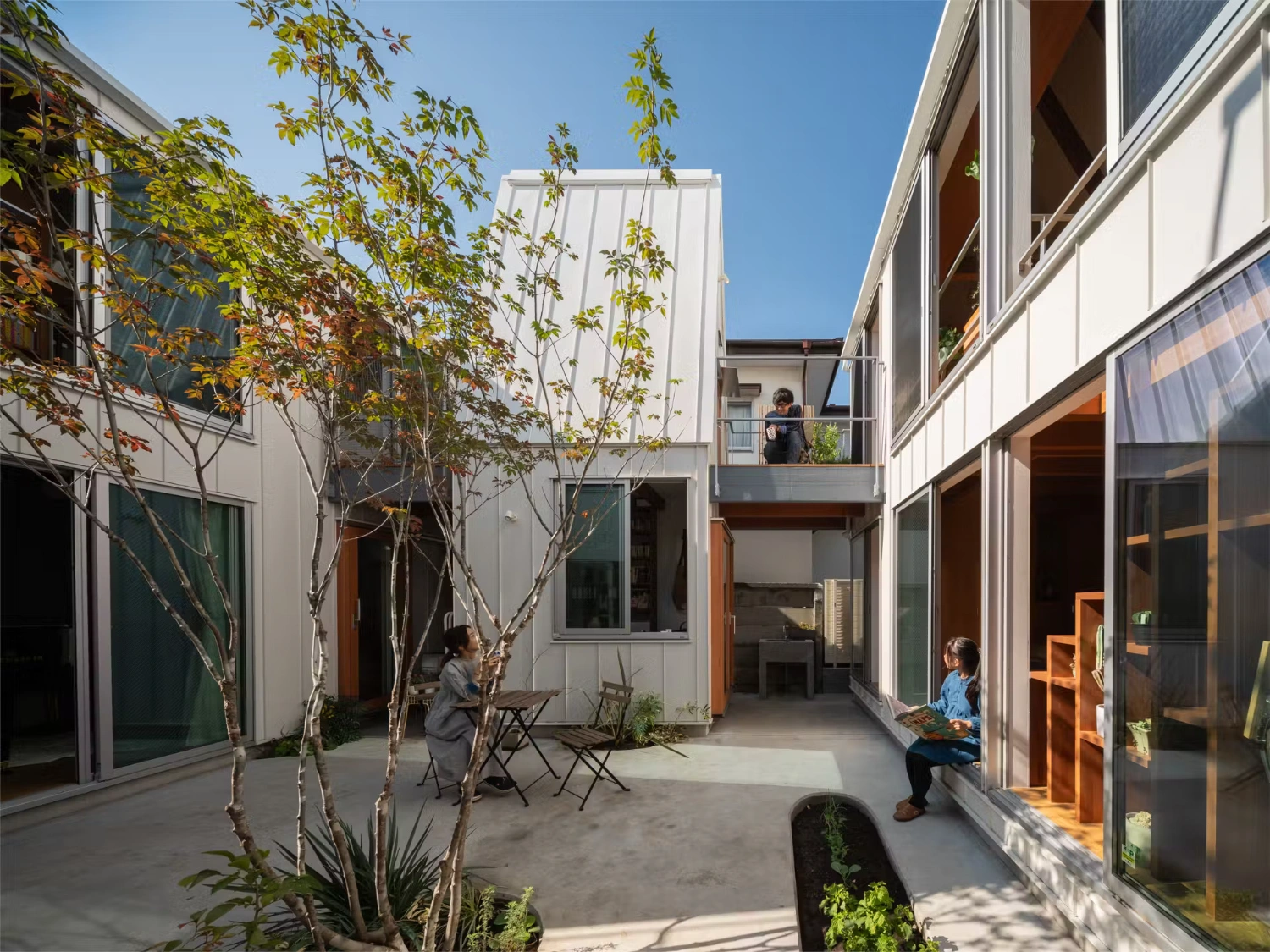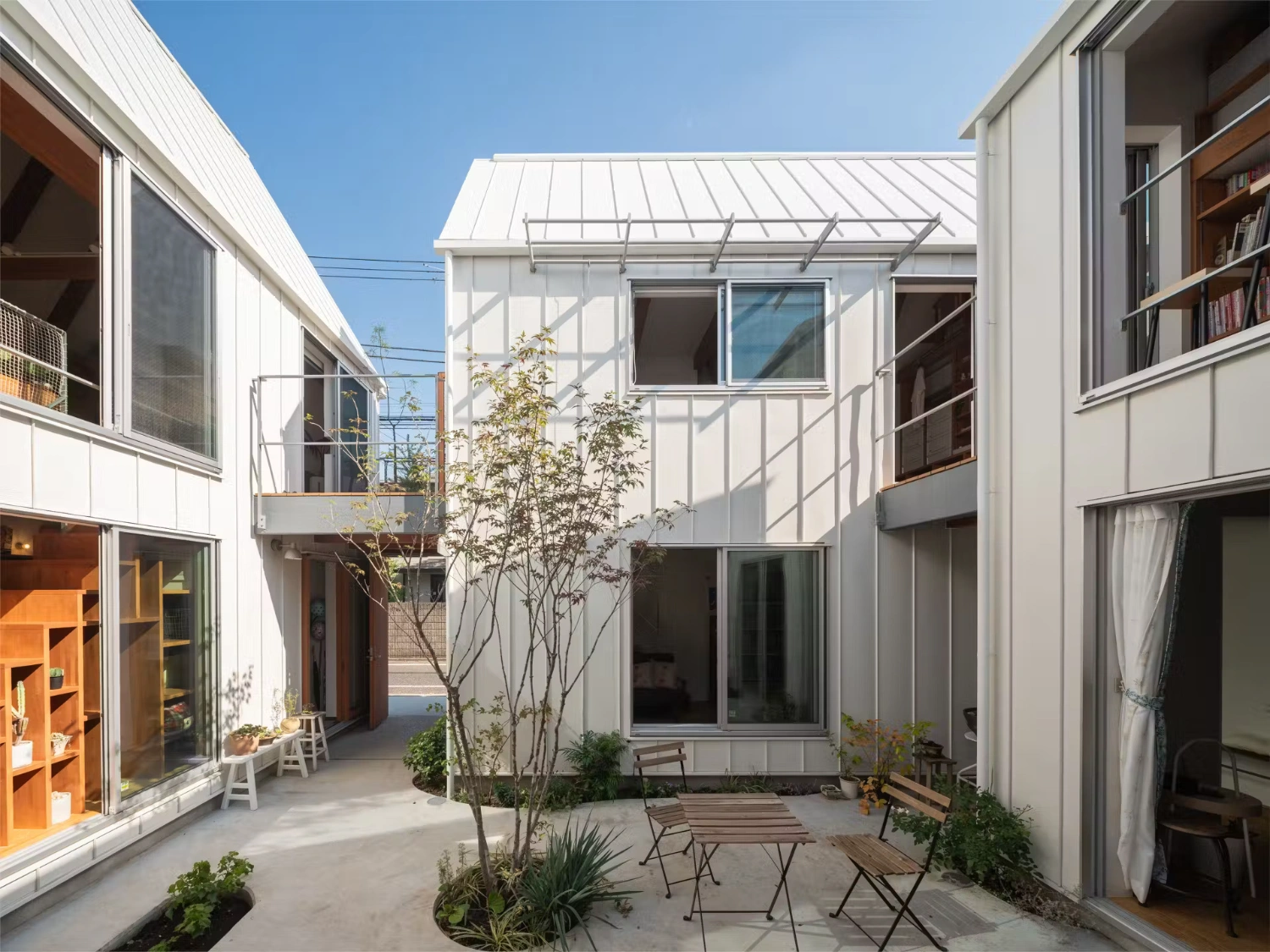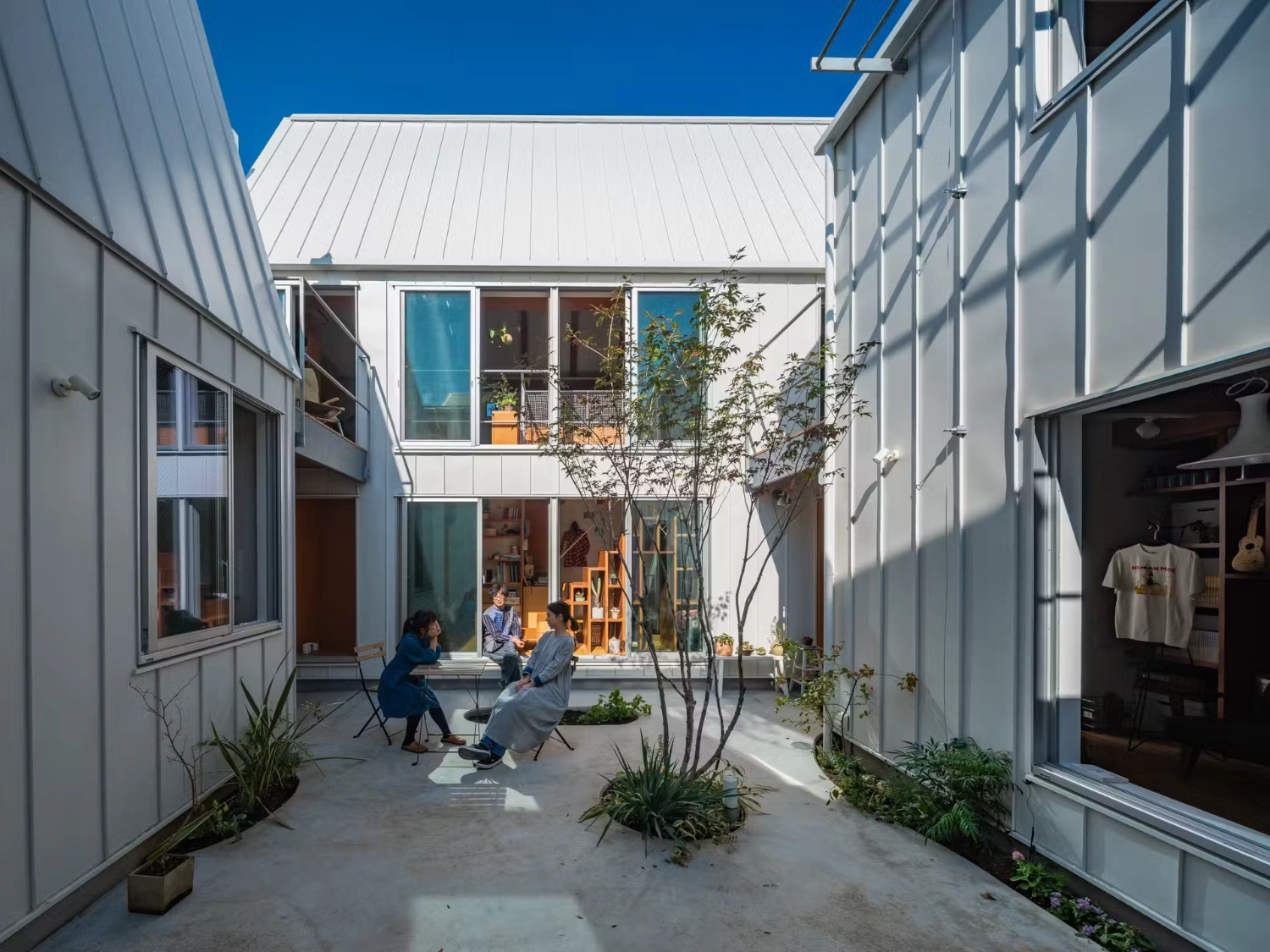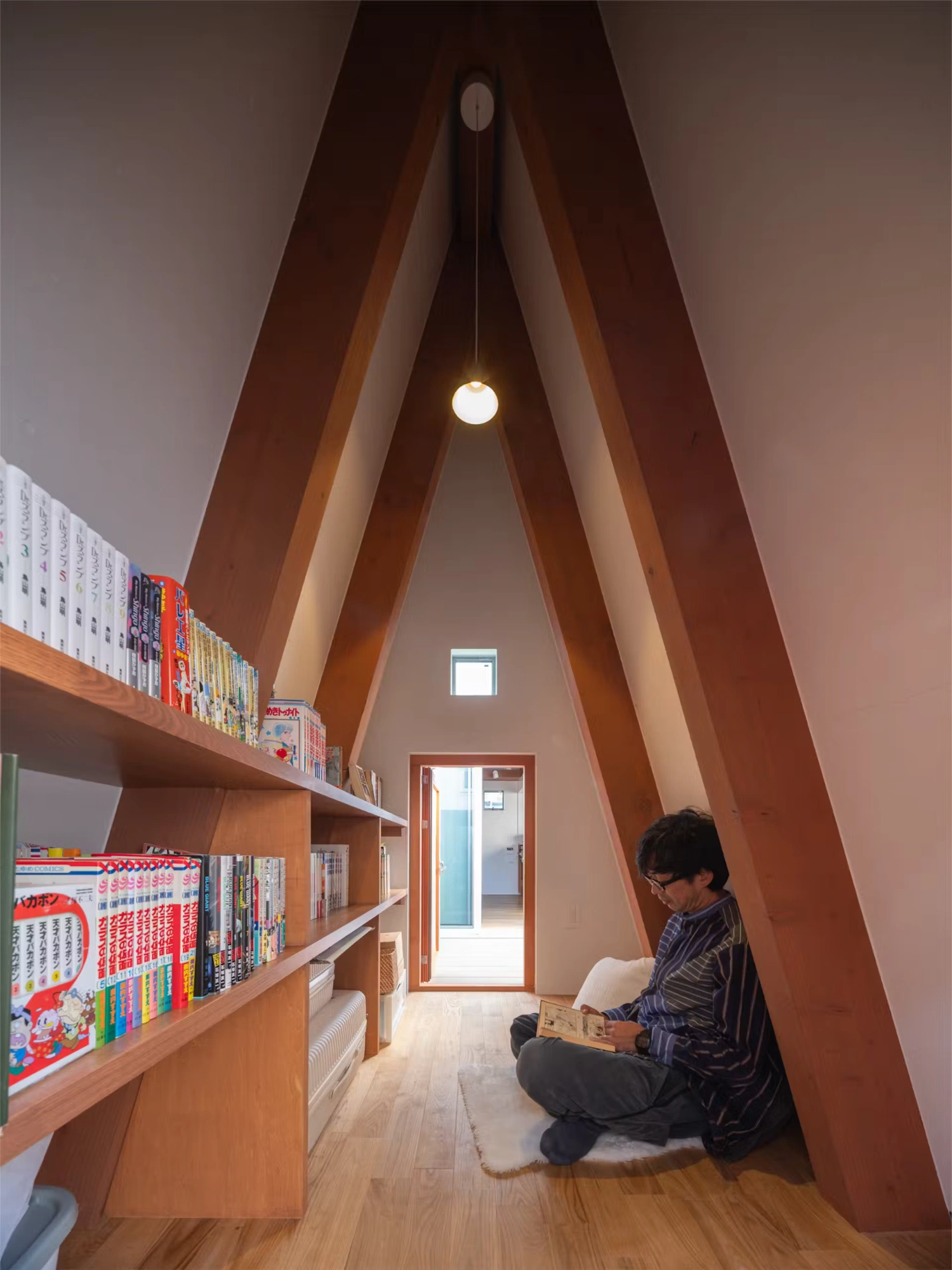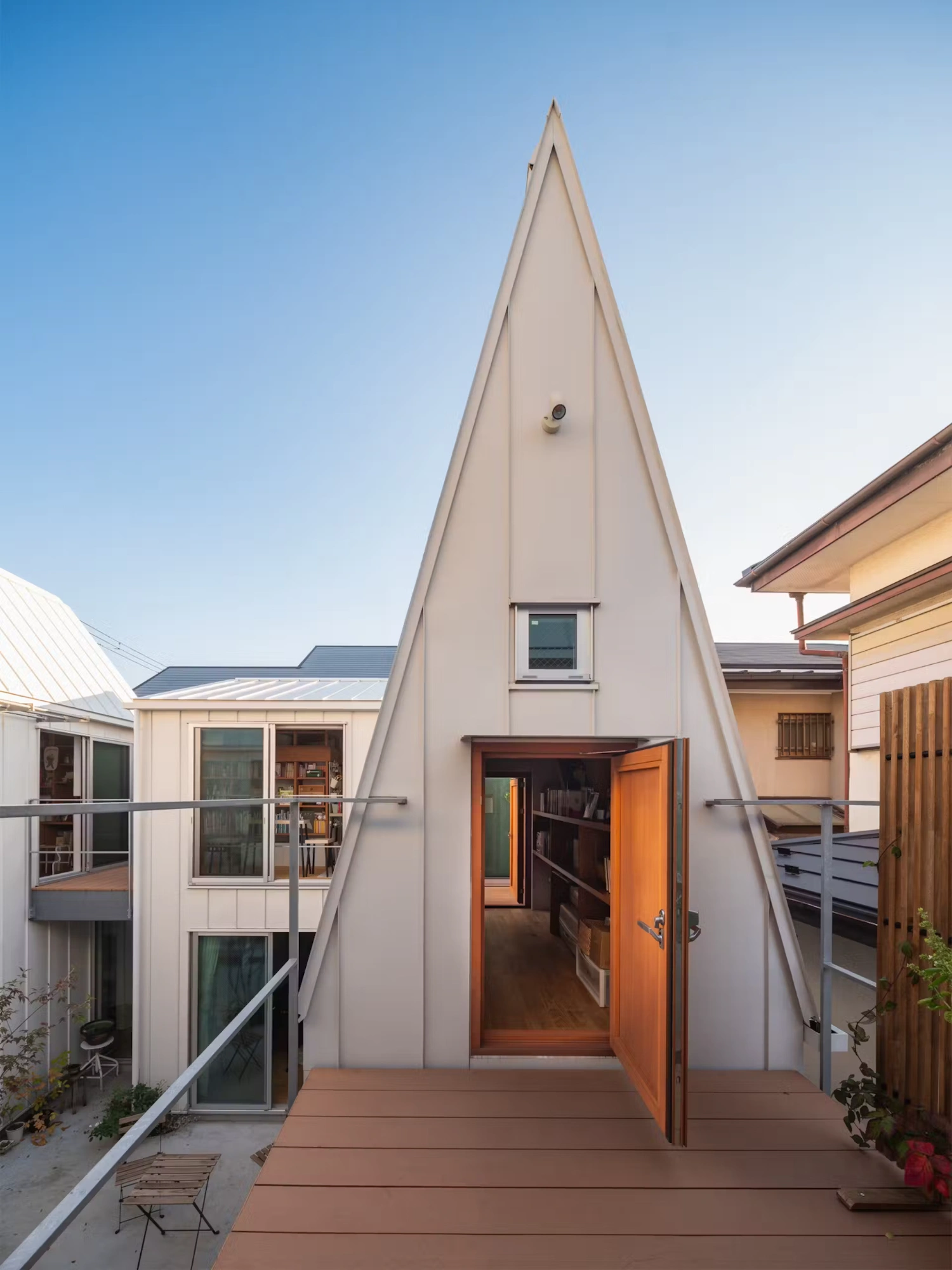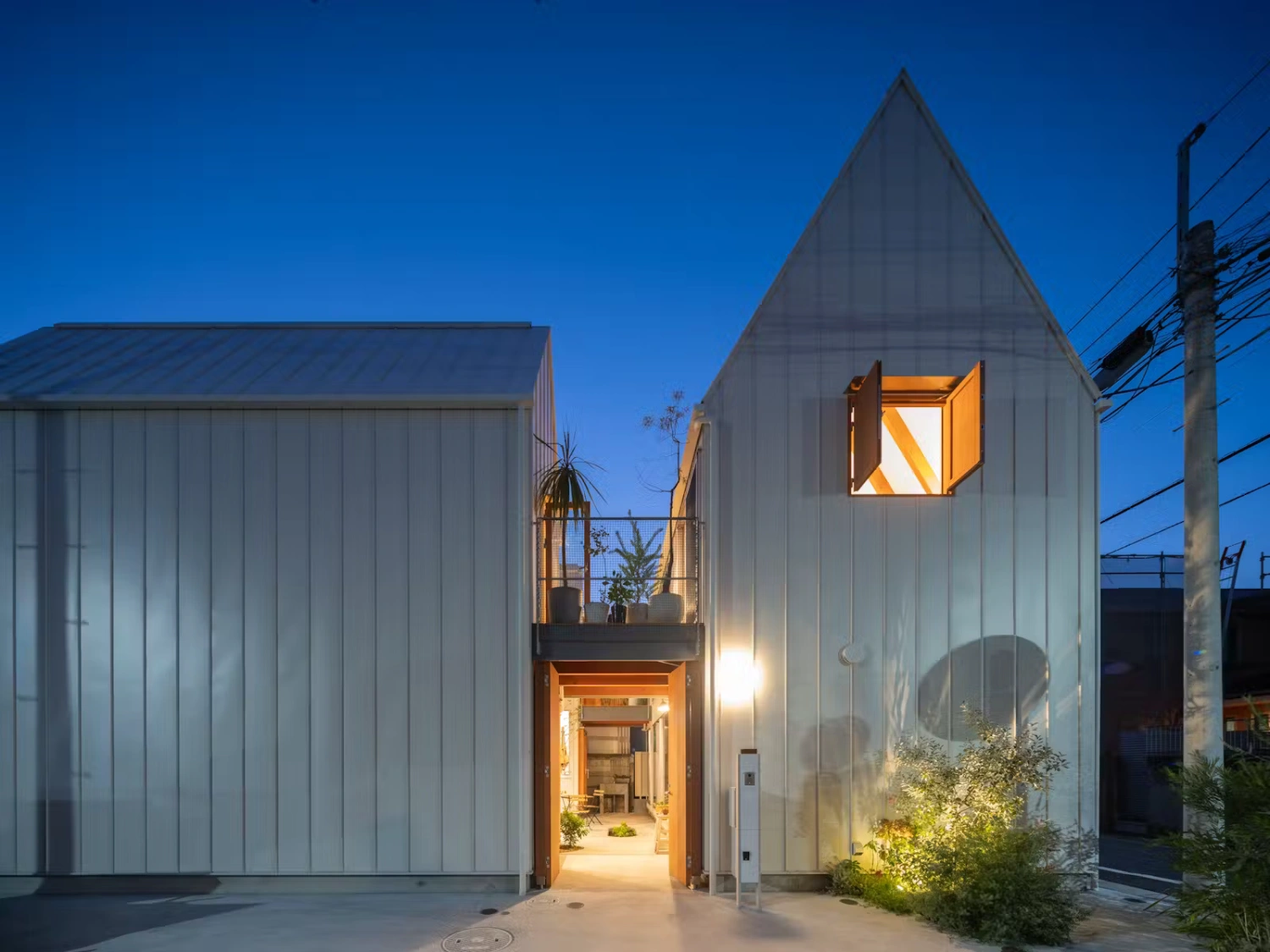Little Village (Kaku-Kaku Kanadel) by Tokyo-based architect Takeshi Hosaka unfolds as a finely tuned micro-settlement, shaped not around urban density but around the rhythms of a family whose daily life is inseparable from artistic production.
The house breaks from the convention of the monolithic domestic block. Instead, it disperses its program across four discrete volumes, each crowned with its own distinct roofline, creating a constellation of spaces that feel both intimate and quietly theatrical.
The family’s three creative practices—scriptwriting, illustration, and music—become the project’s structural logic. Each discipline receives its own wing, allowing for deep focus without severing the sense of proximity. The arrangement encourages a subtle choreography: the writer’s room remains slightly withdrawn, the illustrator’s studio opens toward a terrace, and the daughter’s music room anchors a point of acoustic and emotional brightness. Between them, the shared living room acts as an informal commons, grounding the house with a sense of everyday cohesion.
Linking these volumes is a network of gardens, narrow passages, and slivers of open air that gently blur the definition between inside and out. Standing within these thresholds, one can sense the architecture’s quiet ambition: to support a family who oscillates throughout the day between solitude and exchange. These in-between spaces—small pauses, framed views, incidental clearings—give the house its village-like atmosphere, where encounters happen as naturally as departures.
Hosaka’s design doesn't overemphasize the metaphor of the village; instead, it lets the domestic routines of the residents activate it. As the architect notes, one might hear a new melody drifting from the daughter’s room while glimpsing an illustration taking shape across the garden. The architecture becomes a listening device, a viewing lens, and a circulatory map for a household in constant creative motion.
What emerges is a home that acknowledges individuality without isolating it. The expressive roofs signal personal worlds, yet the paths and terraces weave these worlds together with unexpected softness. Little Village is less a collection of rooms than a landscape for making—a place where writing, drawing, and playing coexist in a quiet, evolving dialogue.



